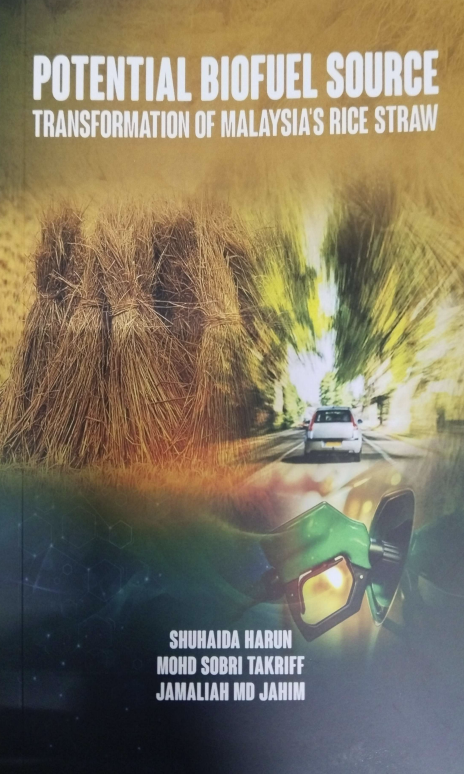POTENTIAL BIOFUEL SOURCE TRANSFORMATION OF MALAYSIA'S RICE STRAW
Author: SHUHAIDA HARUN, MOHD SOBRI TAKRIFF, JAMALIAH MD JAHIM
Publisher: UKM Press
ISBN: 9786294864214
Weight: 292 gsm
Pages: 189 m/s
Year: 2025
Price: RM 45.00
The rice straw from rice plantation is one of the lignocellulosic biomass (LCB) available in Malaysia for renewable biofuel source. Rice straw structure is complex and required modification to convert from fiber to fermentable sugar. The complex and recalcitrance structure of rice straw cell wall to release the polysaccharides for fermentable sugar is a major hurdle in biochemical conversion technology. Pretreatment of untreated rice straw is an essential processing step required to alter and open up the cell wall structure. It also improves the accessibility of hydrolytic enzymes to cellulose and hemicelluloses, and thus increasing the fermentable sugar yield and conversion. Anhydrous ammonia pretreatment, such as Ammonia Fiber Expansion (AFEXTM), is one of the leading pretreatment technologies that offers an effective and economically attractive means of increasing the sugar yield and conversion from the rice straw. This book aimed to examine the anhydrous ammonia pretreatment process on rice straw, and the performance of ammonia pretreated rice straw. Conditions of the pretreatment parameters (temperature, ratio of ammonia to rice straw, ratio of moisture to rice straw, and residence time) for rice straw pretreatment were optimized experimentally using response surface methodology (RSM), with concentrations of monomeric sugars, which were glucose, xylose, and total sugars, as the response variables. Understanding on the influence of the pretreatment on the structural modification of the rice straw, its effects on the enzymatic hydrolysis performance, and conversion to the ethanol as well as processing issues, would enhance the knowledge and facilitate in setting up the biofuels industry in Malaysia.








